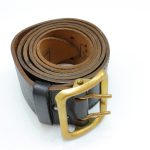Understanding Wheel Alignment
Wheel alignment is a critical aspect of vehicle maintenance that directly influences both performance and safety. Alignment refers to adjusting the angles of the wheels so they are set to the car manufacturer’s specifications. Proper wheel alignment ensures that your tyres hit the road at the correct angle, pivotal for optimal vehicle handling.
For UK vehicles, certain alignment issues are more prevalent due to typical road conditions and frequent driving patterns. Misalignment can occur when wheels are jolted by potholes, kerbs, or after installation of new tyres. Common symptoms in misaligned vehicles include uneven tyre wear, a vehicle pulling to one side, or steering wheel vibration.
This might interest you : Essential Guide to UK Motorcycle Exhaust System Modifications: Legal Requirements Explained
Misalignment doesn’t only affect performance but poses a significant risk to safety. Poor alignment reduces the vehicle’s handling capabilities, making it harder to maintain control during adverse conditions. Such issues increase the likelihood of accidents, putting both the driver and others on the road at risk.
By addressing and maintaining proper wheel alignment, owners of UK vehicles can ensure their cars run smoothly, safely, and efficiently. Regular checks can prevent premature tyre wear and keep repair costs low, contributing to a safer driving experience.
Also read : Mastering Ergonomic Seating Adjustments for the Ultimate Driving Experience in British Luxury Cars
DIY Wheel Alignment Checking Methods
Checking your wheel alignment at home can be a straightforward task with some basic tools and attention to detail. It’s important to know the methods and tools for alignment to ensure your vehicle runs smoothly and efficiently.
Basic Tools Required
To perform a DIY alignment check, you’ll need the following tools:
- Measuring tape for precise measurements.
- A straight edge or string to verify alignment visually.
- Car jack and stands to safely elevate your vehicle.
- Wrench, matching your wheel nuts, to adjust alignment if needed.
Step-by-Step DIY Alignment Process
Begin by parking your vehicle on a flat surface. Elevate the car safely using a car jack and stands. Use the measuring tape to measure the distance between the tires’ front and back edges. The ideal alignment means both measurements are equal. Next, use the straight edge or string to visually assess the wheel alignment by placing them against the wheels. Any deviation suggests misalignment.
Common Mistakes to Avoid
Avoid measuring on an uneven surface, which can distort readings. Ensure tools are functioning correctly and measurements are accurate. Misjudging these can lead to ineffective alignment checks, voiding efforts made. Always double-check your work for accuracy.
Professional Wheel Alignment Services
Maintaining the proper alignment of your vehicle’s wheels is crucial for both safety and performance. Seeking professional services is the most reliable way to ensure your vehicle is operating optimally. Alignment specialists use precise equipment and trained expertise to adjust your car’s suspension system, ensuring that the wheels are set at the correct angles as specified by the manufacturer.
When selecting alignment service providers in the UK, consider the following criteria: reputation, customer reviews, and certifications. Always choose providers with highly rated customer feedback and who employ certified alignment specialists. This ensures that your vehicle is in the hands of skilled professionals who use the latest technology in alignment diagnostics and adjustments.
Regarding the costs associated with professional services in the UK, these can vary significantly based on several factors. On average, expect to pay between £50 to £100 for a standard alignment check. However, prices might increase if additional adjustments or parts are required. Investing in regular alignment checks can save you money in the long run by preventing uneven tire wear and improving fuel efficiency. Always consult with multiple providers to understand your options and make an informed choice.
Recommended Tools for Accurate Alignment Checks
Understanding the importance of alignment tools is crucial for both professionals and DIY enthusiasts. These tools ensure that vehicles perform efficiently and safely on the roads.
Essential Equipment for Professionals
For professionals in the UK, investing in high-quality vehicle tools is non-negotiable. Precision checking devices, such as laser alignment machines, offer unparalleled accuracy and ease of use. These machines not only save time but also ensure that alignment checks are done with utmost precision, reducing errors significantly.
Best Tools for DIY Enthusiasts
DIY enthusiasts need reliable yet simple alignment tools for home use. Consider tools like alignment gauges or toe plates. These tools are affordable and designed for easy handling, making them perfect for occasional use. While they might not offer the same precision as professional equipment, they provide reliable results when used properly.
Where to Purchase or Rent Alignment Tools
In the UK, alignment tools can be purchased or rented from various suppliers. Look for local automotive stores or online platforms that offer a wide range of tools for purchase or rental. This flexibility allows both professionals and hobbyists to select the best tools that meet their specific needs without a hefty investment.
Tips for Maintaining Proper Wheel Alignment
Maintaining proper wheel alignment is crucial for the longevity of your vehicle. Routine checks play a vital role in ensuring consistent vehicle upkeep. It is recommended to perform alignment maintenance every 6,000 miles or during every other oil change. This routine not only safeguards efficient performance but also prevents uneven tire wear and fuel wastage.
Your driving habits can significantly impact alignment. Regularly driving on rough terrains or hitting curbs may disrupt the balance, leading to misalignment. It’s essential to adopt careful driving practices, avoiding unnecessary jolts and sharp turns to maintain optimal alignment.
However, featuring signs indicating the need for an alignment adjustment helps avoid more extensive repairs. Some common indicators include the vehicle pulling to one side, uneven tire wear, or a crooked steering wheel when driving straight. Addressing these issues promptly can prevent further damage.
Ensure timely maintenance to uphold your vehicle’s performance. Employing consistent checks and adapting careful driving habits will provide you with a smoother ride and enhance your vehicle’s lifespan.
Safety Considerations During Wheel Alignment Checks
Ensuring alignment safety is paramount when performing wheel alignment checks, particularly for DIY enthusiasts. Adhering to essential safety tips can prevent accidents and ensure a straightforward process.
Before commencing any alignment work, equip yourself with the necessary safety gear. This includes safety goggles and gloves to protect against debris and ensure a firm grip on tools. Wearing durable footwear can help prevent injuries from dropping heavy equipment.
DIY safety involves taking precautionary measures to avoid unforeseen mishaps. Always work in a well-lit area and maintain a clean workspace to prevent tripping hazards. Importantly, ensure your vehicle is on a stable and level surface. This can be achieved by using ramps or axle stands designed for your vehicle’s weight and type.
Another critical aspect of DIY wheel alignment is maintaining the vehicle’s support and stability. Utilizing jack stands for additional safety is advisable, even if the car is on a ramp, providing extra stability and peace of mind. Never rely solely on a hydraulic jack, as it may fail without warning.
By following these alignment checking safety tips, you enhance your protection and facilitate a smooth and safe completion of your wheel alignment task.











